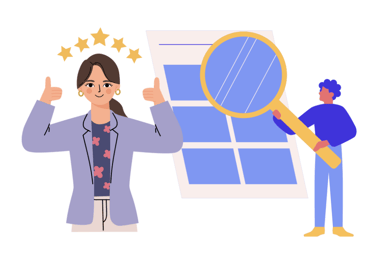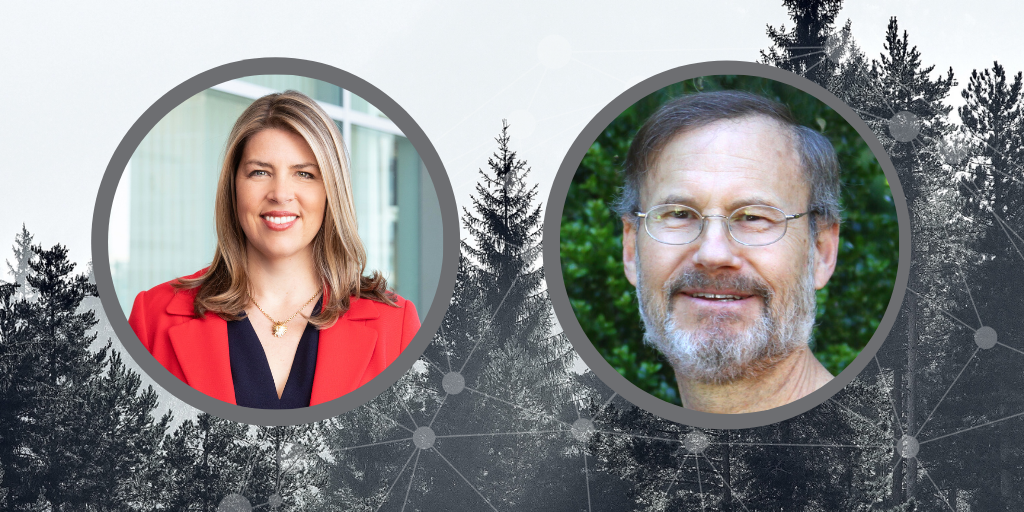Keypoint Newsletter: The Birth of a Conference
Keystone Symposia conferences hold a special place in science for their ability to drive interdisciplinary, innovative and transformative research that impacts the overall trajectory of science and medicine. What is the ‘special sauce’ behind our meeting programming that enables us to continually be on the forefront of new research frontiers? It is a community driven process that draws in thought-leaders across various expertise to collectively brainstorm, guide and finesse meeting programs that explore new horizons and challenge the status quo. Read on for a sneak peek behind the scenes into how a Keystone Symposia conference is born, and what makes it so special.

Inception
The gestation period for a Keystone Symposia conference is 2 years, from inception to implementation. While the rest of the world is ringing in the 2024 new year, we are busy considering conference topics for the 2026 conference season! The foresight of our Scientific Advisory Board, Board of Directors and staff are critical to see so far into the future, and ensure that conferences we hold in 2 years' time will reflect the cutting-edge of biology and medicine.
First, we assemble a curated list of franchise conference topics, like Cancer Immunology, Epigenetics, Tuberculosis etc., for which we seek feedback from the scientific community on emerging research directions, themes and challenges that will be hot topics in 2 years. In addition, we collect concepts from the community through our online portal for new conference ideas: anyone can submit a new conference concept for consideration and we are always looking for new and innovative ideas! (Click here to find out how you can submit your ideas).
Altogether we assemble between 150 and 200 topics each year, which are uploaded to our online Study Group portal in November. We invite field leaders across disciplines to review, comment on and rate the topics to provide community insight into where each field is headed. Study Group participants include:
- Our esteemed Scientific Advisory Board, comprised of thought-leaders across academic, industry, government, publishing, and venture capital sectors and spanning basic to clinical research expertise (See all current SAB members)
- Recent meeting organizers who are experts in their respective fields and are in touch with interests of their specific communities
- Keystone Symposia Fellows who represent broad backgrounds and perspectives
These luminaries provide guidance as to which topics are strong candidates versus which may not yet be ready for prime time or may be past their prime, and what are the critical needs and gaps to address in each field. In addition, they provide suggestions for potential organizers who could fulfill the vision of the Keystone Symposia, providing a whose-who list of rising stars and established leaders in each field for consideration.

Selection
Next this list of 150-200 topics must be whittled down to approximately 50 meetings that will move forward for the 2026 season. In January, our esteemed SAB assembles in Colorado to discuss the comments and rankings from the online Study Groups. This meeting of the minds is the highlight of the year for many, where brainstorming sessions are dynamic, and sometimes heated, as these leaders hash out their ideas for the upcoming conference portfolio.
They are tasked with triaging the vast list of topics, and for those that remain, determining the scope, themes and topics that will be at the cutting-edge of each field. Most importantly, they are charged with selecting a lead organizer who can deliver on their vision. This person must be a broad and integrative thinker, and cannot have recently served this role, to ensure programs with fresh perspectives and new voices.
In addition, the SAB identifies topics with potential synergy that might be invited as joint meetings, a quintessential Keystone Symposia format that drives cross-disciplinary insights, collaboration and innovation to advance both fields. Joint meetings feature 2-3 joint sessions covering emerging topics at the intersection of both fields, to encourage new perspectives and ideas. In addition, both communities are brought together for joint meals, poster sessions and group activities to encourage interdisciplinary interactions and networking opportunities. In many cases joint meetings have led to the emergence of entirely new fields, such as Immunology and Metabolism becoming the now franchise Immunometabolism meeting. Neuroimmune Interactions, Tumor Metabolism, and many other very popular meetings have similar origins due to the foresight of the SAB to see potential synergies between disparate fields.
Once these concepts are fleshed out, the SAB votes on which meetings to take forward. Based on voting outcomes, 50-55 of the top selections are chosen for the upcoming conference season.

Invitation
After the January SAB meeting, our Chief Scientific Officer sends official organizer invitations, which are typically met with great enthusiasm. This is a great honor and opportunity for many who have been avidly attending our meetings for years and even decades!
Their first step is to select an organizing team that will work together to develop the program. Organizing teams are reviewed by Keystone Symposia staff prior to invitation to ensure broad representation in terms of scientific expertise but also demographics, geography, institution, sector, career stage, etc.
Once the organizing team is assembled, they are tasked with delivering a draft program by April/May. Each team receives an outline to guide the development of their program, which is meticulously compiled by the staff to reflect the January SAB recommendations. When drafting the program, there are many things to consider; beyond the science, organizers are encouraged to provide international voices, industry representation (where appropriate, ie. translational topics) and other broad perspectives in their speaker line-ups. In addition, speaker overlap with previous meetings cannot exceed 25%, to ensure that franchise meetings cover novel concepts and ideas each year—no one likes a stale meeting!

Program Review
Once draft programs are received they are shared with the SAB for online comment, and then discussed at our June SAB meeting, which is sometimes held in-person, hybrid or entirely virtually. The SAB critiques each program, and provides feedback for improvement and refinement to ensure it meets Keystone Symposia’s high standards. Common critiques include:
Speaker Demographics
- Too US centric- need more speakers from Europe, Asia, Africa, South America etc.
- Not enough industry speakers, where appropriate (ie. translational topics)
- Insufficient inclusion of broad backgrounds, perspectives and representation
Scientific Program
- Scope too broad or too narrow to appeal to the right attendance
- Cohesion lacking/ overarching themes not integrated across sessions/session sequence does not follow logical order
- Suggestions for key topics that may have been missed
- Lack of translational and/or clinical research talks
- Miss opportunities for joint sessions if applicable
When deficits are identified, SAB members suggest speakers that can fill these gaps and improve the program from their rolodex of experts. This is particularly key for inside insights into industry representation, where industry SAB members have unique knowledge of which companies are doing exciting unpublished work in these areas.
In addition, the SAB is asked to identify opportunities for big picture panel ideas like:
- ethics panels in genetic engineering or AI programs
- bridging regulatory/clinical trial challenges panels that bring together FDA representatives, clinical researchers and translational scientists to align interests
- bridging science and policy in global health related topics
All of these suggestions are returned to the organizers over the summer to revise their programs for final review and approval. Revised programs must be finalized by Fall 2024 to ensure that speaker invitations can be sent out at least 1 year in advance, before their calendars get booked up with other commitments.
And thus, a Keystone Symposia is born!
Stay tuned for our next edition where we will delve into the next steps in the process of meeting implementation, including the selection of meeting dates and venues, workshop programming, short talk selection and more!
Return to the December 2023 Keypoint Newsletter

Related news
Keypoint Newsletter: A Message from Our CEO
By Jamie Baumgartner, PhD, Keystone Symposia President & CEO
Upcoming Fall 2025 Conference Highlights & Organizer Interviews
Our Fall 2025 line-up features exciting topics across infectious disease, artificial intelligence...
.png?width=4688&height=1563&name=donate%20banner%20(1).png)




